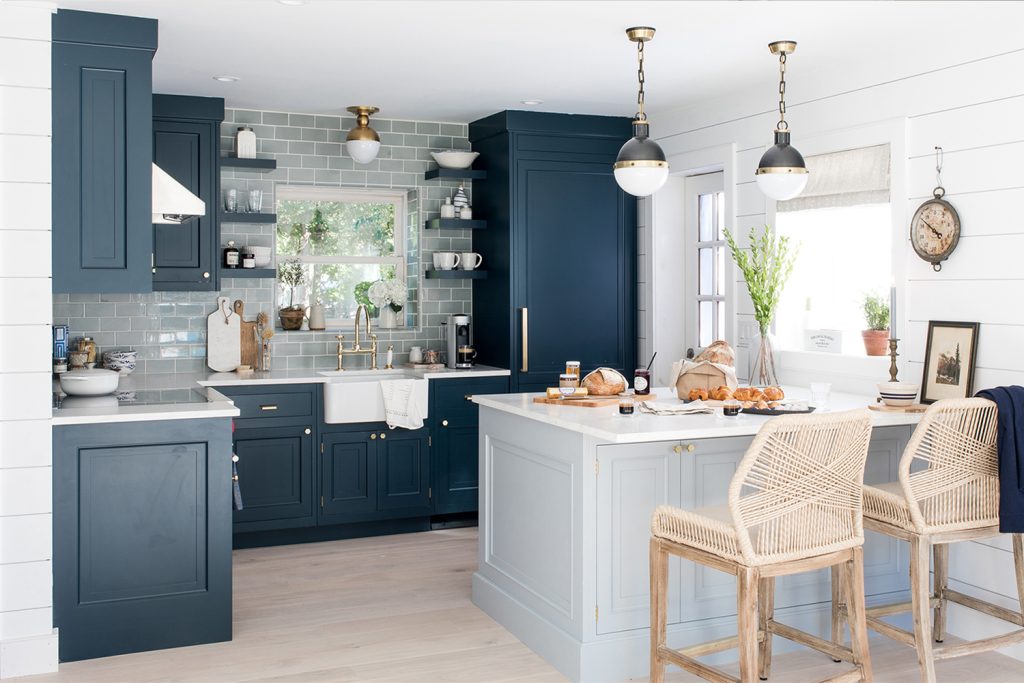As the world becomes more and more conscious of the impact that our actions have on the environment, many people are looking for ways to incorporate eco-friendly materials into their daily lives. One area where this can have a significant impact is in the design of our homes, particularly in the kitchen. The kitchen is often the heart of the home, and is a space where a lot of resources are used, from water and energy to food packaging and cleaning products. By choosing eco-friendly materials for your kitchen design, you can reduce your carbon footprint and create a healthier, more sustainable living space.
There are many different ways to incorporate eco-friendly materials into your kitchen design. From the cabinets and countertops to the flooring and lighting, every aspect of your kitchen can be made more sustainable with the right choices. Here are some tips to help you create an eco-friendly kitchen that looks great and helps protect the planet:
1. Choose sustainable materials: When designing a green kitchen, it’s important to consider the materials that you use. Look for materials that are renewable, recyclable, and environmentally friendly. For example, bamboo is a sustainable alternative to wood for cabinets and countertops, as it grows quickly and can be harvested without harming the environment. Recycled glass countertops are another eco-friendly option, as they are made from post-consumer materials and can be recycled again at the end of their life. Reclaimed wood is also a popular choice for kitchen flooring and furniture, as it gives a rustic, natural look while reducing the need for new materials.
2. Use low-impact finishes: When selecting finishes for your kitchen, choose products that have a low environmental impact. Look for paints and sealants that are free of volatile organic compounds (VOCs), which can off-gas harmful chemicals into the air. Water-based paints are a good choice, as they have fewer VOCs and are easier to clean up. For countertops and flooring, consider finishes that are non-toxic and biodegradable, such as linseed oil or wax. These finishes are better for your health and the environment, and can give your kitchen a natural, organic look.
3. Energy-efficient appliances: One of the biggest energy hogs in the kitchen is the appliances. When choosing appliances for your eco-friendly kitchen, look for models that are Energy Star certified. These appliances are designed to use less electricity and water, saving you money on your utility bills and reducing your carbon footprint. Consider investing in a high-efficiency refrigerator, dishwasher, and stove, as these appliances are the biggest energy consumers in most kitchens. You can also look for appliances that have smart features, such as programmable settings and energy-saving modes, to further reduce your energy usage.
4. Water-saving fixtures: Another area where you can make a big impact in your eco-friendly kitchen is with water-saving fixtures. Look for faucets and sinks that are low-flow, meaning they use less water without sacrificing performance. You can also install a water-saving dishwasher and washing machine, which use less water and energy to get your dishes and laundry clean. Consider a reverse osmosis water filter for your sink, which can help reduce the amount of bottled water you consume and cut down on plastic waste. By conserving water in your kitchen, you can help protect this precious resource and reduce your environmental impact.
5. Recycled and upcycled materials: When designing your kitchen, think about ways to incorporate recycled and upcycled materials into your design. Reclaimed wood can be used for cabinets, flooring, and furniture, giving your kitchen a rustic, eco-friendly look. Recycled glass can be used for countertops and backsplashes, adding a touch of color and sparkle while reducing waste. Salvaged metal can be used for hardware and fixtures, adding an industrial-chic vibe to your kitchen. By repurposing materials that would otherwise end up in the landfill, you can give your kitchen a unique, sustainable look that reflects your commitment to the environment.
In conclusion, incorporating eco-friendly materials into your kitchen design is a great way to reduce your environmental impact and create a healthier, more sustainable living space. From choosing sustainable materials like bamboo and recycled glass to using low-impact finishes and energy-efficient appliances, there are many ways to make your kitchen more eco-friendly. By making small changes in your kitchen design, you can help protect the planet and create a beautiful, functional space that you can feel good about. So next time you renovate or remodel your kitchen, consider incorporating eco-friendly materials into your design for a greener, cleaner future.

